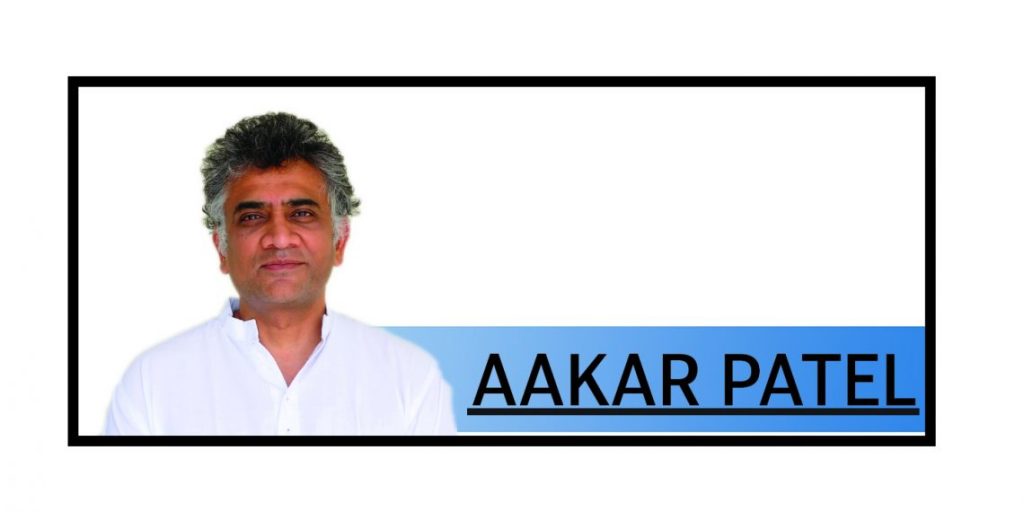Aakar Patel
Some years ago, NITI Aayog said it would prepare a ‘single, informative dashboard for all the twenty-nine (later 32) global indices’ on which India was ranked. This monitoring exercise was ‘not just to improve rankings but to improve systems and drive reforms to attract investments and to shape India’s perception globally’.
This did not happen, for whatever reason, but that should not stop us from doing it ourselves. For one of my books, I looked at more than four dozen global indicators to compare where India stood now compared to 2014. I periodically revisit the data and it is instructive to know what the position is. Let’s have a look.
On the Human Development Index, India’s rank in 2014 was 130 and its rank today is unchanged. The UN report says that “inequality reduces India’s HDI by 30.7%, one of the highest losses in the region. While health and education inequality have improved, income and gender disparities remain significant. Female labour force participation and political representation lag”.
The Civicus monitor demoted India’s civic space from ‘Obstructed’ to ‘Repressed’. It said that “there are a total of 49 countries in the world with this rating (of Repressed). This rating is typically given to countries where civic space is heavily contested by power holders, who impose a combination of legal and practical constraints on the full enjoyment of fundamental rights.”
The Lowy Institute Asia Power Index measures hard power. India’s score fell from 41.5 to 39.1, losing its ‘major power’ status. The Institute says that “India exerts less influence in the region than expected given its available resources, as indicated by the country’s negative power gap score. Its negative power gap in 2024 was the largest since the inception of the Asia Power Index.”
Freedom House’s Freedom in the World looks at rule of law, political pluralism and elections, functioning of government, civil liberties and so on. In 2014 India was given a rating of 77 and marked ‘Free’. In 2025 this was reduced to 63 and demoted to ‘Partly Free’. (When this first happened the government was angered but subsequently it has stopped commenting on such reports). Freedom House said that “while India is a multiparty democracy, the government has presided over discriminatory policies and a rise in persecution affecting the Muslim population”.
The World Justice Project publishes a Rule of Law Index that monitors nations’ criminal and civil justice system, fundamental rights, constraints on government powers, absence of corruption, transparent government, order and security and regulatory enforcement. India has fallen from its 2014 ranking of 66 to 86 globally. The United Nations’ Sustainable Development Solutions Network World Happiness Report looks at GDP per capita, social support, healthy life expectancy, freedom to make life choices, generosity, perceptions of corruption and dystopia. India has gone from 111 in 2014 to 118.
On Reporters Without Borders’ World Press Freedom Index India fell from 140 in 2014 to 151 today. RSF says that “with violence against journalists, highly concentrated media ownership, and political alignment, press freedom is in crisis in ‘the world’s largest democracy’.” On the Cato Institute’s Human Freedom Index India went from 87 in 2014 to 110. On the World Economic Forum’s Global Gender Gap Index, India went from 114 in 2014 to 131 today.
The reasons given were that ‘female representation in parliament falls from 14.7% to 13.8% in 2025, lowering the indicator score for the second year in a row below 2023 levels. Similarly, the share of women in ministerial roles falls from 6.5% to 5.6%.”
Transparency International Global Corruption Perceptions Index used to be reported on regularly in India’s media but not much anymore. India has gone from 85 in 2014 to 96 in the world today.
The Heritage Foundation Global Economic Freedom Index monitors: Rule of law, government size, regulatory efficiency and open markets. India was at 120 in 2014 and 128 today. The reasons given: “progress with market-oriented reforms has been uneven. The foundations for long-term economic development remain fragile in the absence of an efficiently functioning legal framework. Entrepreneurs continue to face severe challenges. India’s regulatory framework is burdensome” and so on.
The Global Hunger Index monitors hunger, stunting in children, undernourishment. In 2014, India ranked 55 out of 76 nations. Today India ranks 102 out of 123 countries. The report says that “India has a level of hunger that is serious.”
When India began to plummet on the Hunger Index, the government said in Parliament in 2021 that it was not possible that Indians were hungry and that “we should not be sensitive to such reports.”
Over time our position has evolved on these indices. First, we assumed that good governance would make a difference. Then it was concluded that these indices had bad data and in any case these institutes were prejudiced against us. Later still, it was decided to just ignore the news though the data kept coming in and still does.
In the absence of general media interest, it is left to the individual to figure out what changes have happened, and in what direction New India has been travelling.
